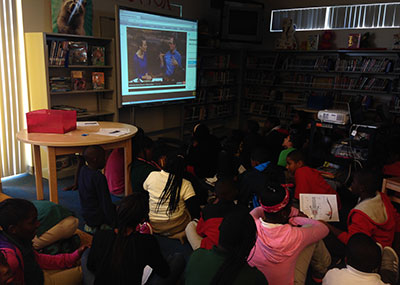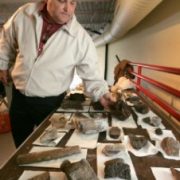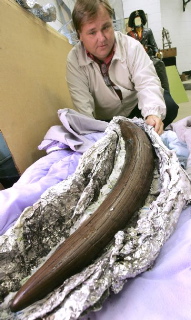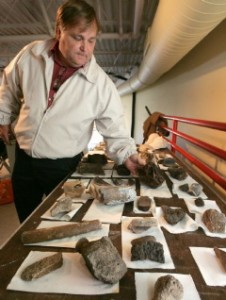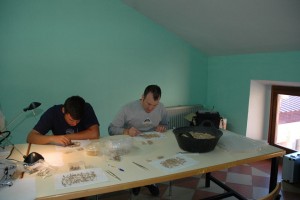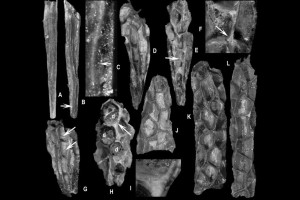road report: Harold in San Antonio
I had the pleasure of announcing our new Affiliation with The Witte Museum in San Antonio on October 7, 2014. By coincidence The Witte was also celebrating its 88th birthday, so it was a double pleasure. Marise McDermott, President and CEO presided over the announcement ceremony which included San Antonio Mayor Ivy Taylor and City Council member Keith Toney. Kind words were spread all around; as always I was humbled and honored to represent the Smithsonian.

San Antonio River runs by the Witte Museum, creating a 13 mile trail from Breckenridge Park to downtown.
I met many wonderful people at the Witte and discovered interesting connections between the Witte and the Smithsonian, especially in the field of paleontology and archaeology. Dinosaurs once ruled south Texas, and Witte Museum Curator of Paleontology and Geology, Thomas Adams, Ph.D., is literally hot on their trail – uncovering dino tracks and other significant fossil remains. Harry Shafer, Ph.D, Witte Museum Curator of Archeology, Professor Emeritus at Texas A&M University, has been studying rock art along the lower Pecos River, among the most sophisticated finds in North America.
The Smithsonian has many long-term interests in San Antonio. The Smithsonian American Art Museum includes works by artists, Jesse Trevino and Mel Casas; Smithsonian Folkways documents the musical heritage of San Antonio, from legendary corrido singer Lydia Mendoza to Grammy Award winning Los Texmaniacs; and the Smithsonian Magazine recently paid tribute to San Antonio’s fabulous Chili Queens, 19th century food entrepreneurs who helped make the taco the world’s favorite meal.
There’s a lot going on at the Witte on which to build our partnership and more to come when the museum completes Phase II of its grand expansion project in 2017.
Angelica Docog and Aaron Parks of the UTSA Institute of Texan Cultures, our other Affiliate in San Antonio, joined the festivities and then brought me back to see an amazing exhibit on Texas Quilts on display in their facility in Hemisphere Park. We talked about several new exhibits they are planning to install including one on Sikh history and culture from the Smithsonian’s National Museum of Natural History. Angelica filled me in on the success of their Smithsonian Youth Access Grant, Young Historians/Living Histories and how it helped the Institute build bridges to San Antonio’s Korean community.
One cannot visit San Antonio without feeling a sense of vibrancy – a growing city with a strong economy, a major convention and tourist destination, a proud history and a bright future. How wonderful to see our Affiliate colleagues leading the charge.
Tomorrow, I get to announce another new Affiliate – Space Center Houston. It’s a good week for lifting off!








